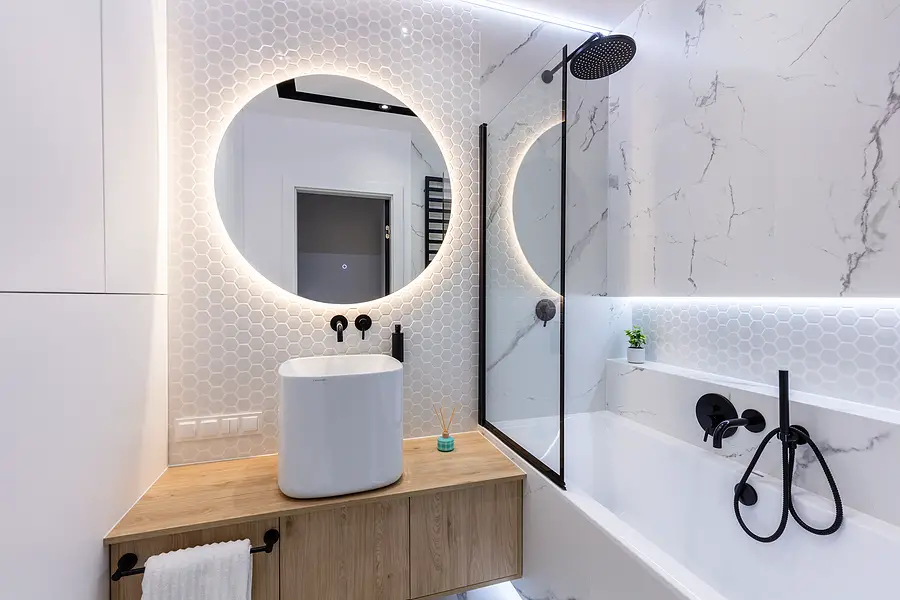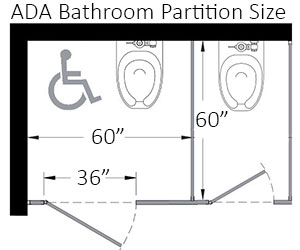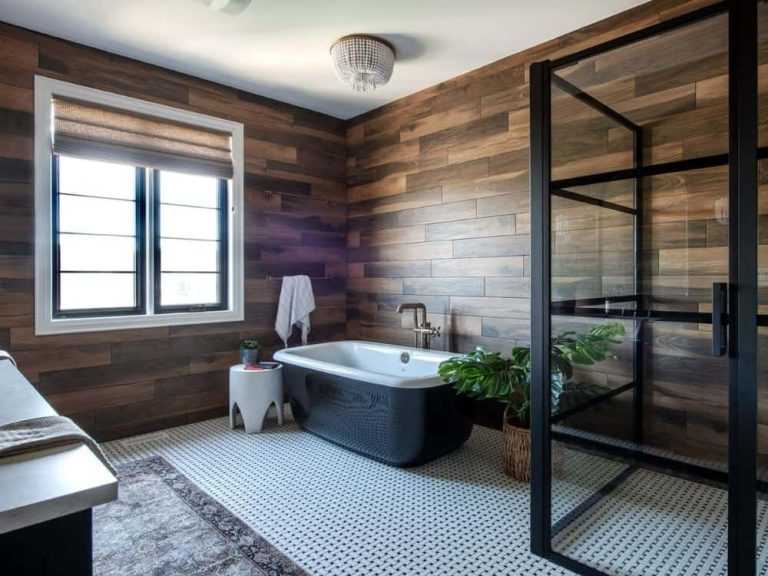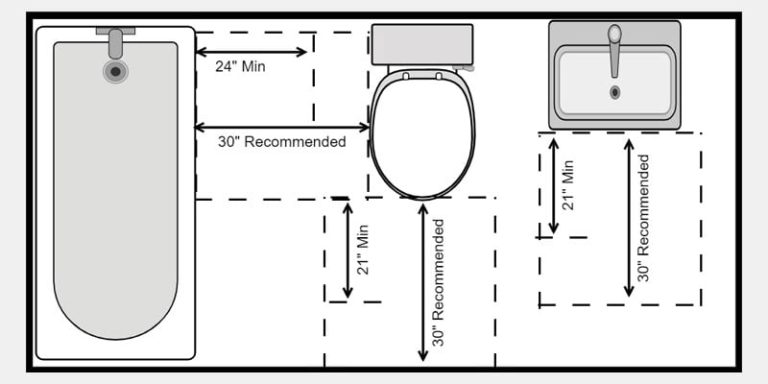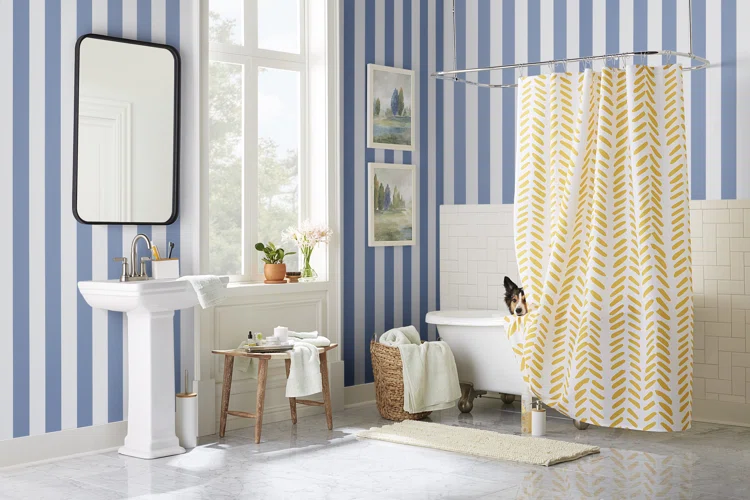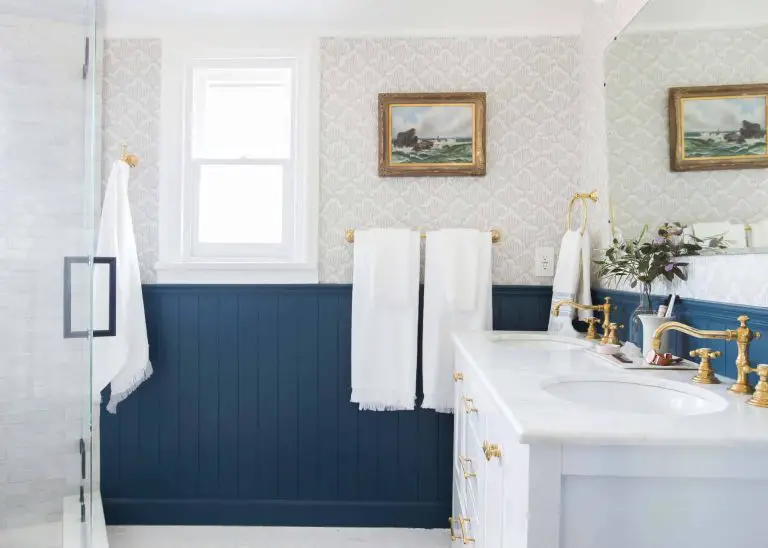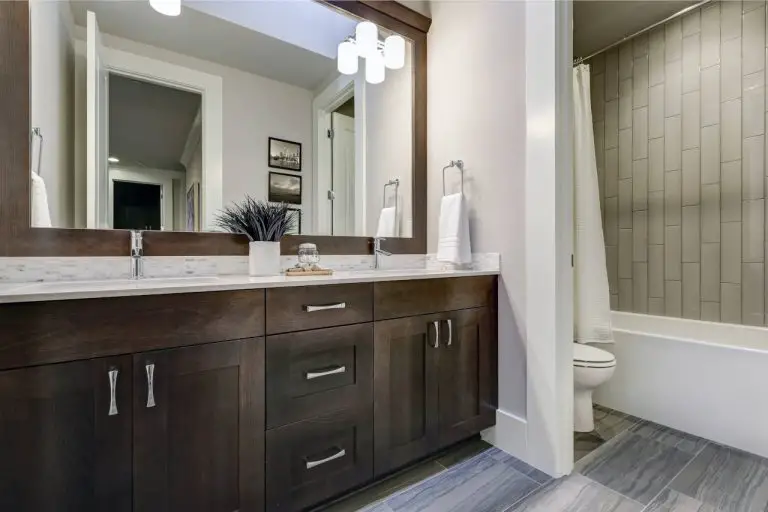10 Essential Rules for Safe Bathroom Wiring
When it comes to bathroom wiring, there are four important rules to follow. The first is to use a gfci-protected circuit for all outlets in the bathroom.
The second is to install a separate circuit for any electric heating or ventilation equipment. Thirdly, all light fixtures in the bathroom should be rated for use in damp locations. Lastly, any switches installed in the bathroom should be placed a safe distance away from any water source.
Keep these guidelines in mind to ensure that the wiring in your bathroom is safe and up to code. Electricity and water do not mix, making bathroom wiring a potentially dangerous task. However, if done correctly, it can greatly improve the functionality and safety of your bathroom. Whether you’re renovating an existing bathroom or installing a new one from scratch, understanding the rules for bathroom wiring is crucial. In this article, we’ll take a closer look at the four main rules for bathroom wiring and give you some advice on how to stay safe while doing the work.

Credit: www.momjunction.com
Understanding Electrical Code Requirements
Bathroom wiring is subject to specific electrical code requirements to ensure safety. One of the most crucial code requirements is installing ground fault circuit interrupters (gfci) to minimize electrical hazards. Additionally, the national electrical code requires your bathroom circuits to be on their own dedicated 20-amp gfci-protected circuit.
Any violation of these code requirements can lead to safety risks such as electrical shocks, electrocution, or fire. Preparing for your bathroom wiring project involves obtaining the right permits, selecting appropriate materials, and properly organizing the wires. Electrical code requirements for bathrooms dictate the types of fixtures, switches, and receptacles you should use.
Don’t forget to seek advice from a qualified electrician for guidance on ensuring maximum safety on your bathroom electrical system installation.
Safety Precautions In Bathroom Wiring
Safety should be your top priority when wiring your bathroom. Many risks and hazards are associated with bathroom wiring. Electrical injuries and accidents can be fatal in extreme cases. Make sure to watch out for risks such as water splashes, electrical short-circuits, and inadequate ground-fault circuit interrupters.
Protect yourself and stay safe by using the proper protective clothing and electrical equipment during wiring. Remember, wearing shoes with rubber soles and rubber gloves can help protect you from electrical shocks. Nonetheless, seek advice from a professional electrician as installing the right electrical fixtures and appliances in your bathroom can be challenging.
Take all the necessary precautions before starting your bathroom wiring project!
Rule 1: Ground Fault Circuit Interrupter (Gfci) Protection
Ground fault circuit interrupter (gfci) protection is a must-have for all bathroom wiring. Installing gfci outlets can save lives, protecting you and your family from electrical hazards. Here are some guidelines for gfci installation: follow the manufacturer’s instructions, turn off the power to the outlet, connect wires correctly, and test the outlet after installation.
In addition to the guidelines, never attempt DIY electrical work if you’re not a licensed electrician. Gfci outlets should be tested at least once per month and after any electrical storm to ensure they’re working correctly. Always prioritize safety over shortcuts when working with electricity.
Rule 2: No Extension Cords Allowed
Extension cords are forbidden in bathroom wiring. They pose serious hazards, including electrocution, fires, and shock. To minimize the use of extension cords, one should consider alternative measures like installing additional outlets or rearranging appliances’ placement. Outlets with ground-fault circuit interrupters (gfcis) should be used near water sources or high-moisture areas to provide additional protection.
Furthermore, bathroom circuits should be separate from the rest of the house’s electrical circuits, and a certified electrician should evaluate any wiring project. Following these suggested measures will ensure safe electrical wiring practices in bathrooms.
Rule 3: Proper Placement Of All Outlets And Light Switches
Proper placement of all outlets and light switches is essential for bathroom wiring. Electrical outlet placement should be at least three feet away from the bathtub or shower, and 6 feet away from the sink. Light switch placement should be located outside the bathroom and at least 3 feet away from the shower or bathtub area.
The importance of correct placement is that it ensures safety. It also makes bathroom tasks, such as shaving and applying makeup, more comfortable. Plus, it prevents moisture from getting into the electrical wiring, hence reducing the risk of electric shock and fire.
Always seek a licensed electrician’s advice when planning your bathroom wiring. They can help ensure that you follow the requisite electrical codes and guidelines to keep everyone safe.
Rule 4: Using The Right Wire For Each Circuit
When it comes to bathroom wiring, proper installation is essential to ensure your safety. Rule 4 is all about using the right wire for each circuit, to avoid electrical hazards. Identifying the right wire for the job is key, along with careful wiring techniques.
It’s always advisable to use a professional electrician rather than attempting diy, as this can lead to serious problems. Remember to check local regulations and codes to ensure compliance. With these guidelines in mind, you can wire your bathroom safely and confidently.
Rule 5: Understanding And Following Amp Rating Requirements
Amp ratings play a vital role in bathroom wiring. Understanding these ratings is crucial for avoiding electric hazards. Every electrical device has a designated amp rating, which indicates the maximum current it can handle without overheating. By checking the device’s rating, you can ensure that the circuit is not overloaded, leading to tripping breakers and potentially hazardous situations.
To determine a device’s amp rating, you can check its labeling or user manual. Electrical items, such as hair dryers and power tools, generally have higher amp ratings than others. So, it’s important to know the amp ratings of all the devices and ensure they are compatible with your bathroom’s circuits.
By following these guidelines, you can ensure the safety of your bathroom wiring.
Rule 6: Bathroom Fixture Electrical Requirements
Bathroom wiring rules are essential to prevent any potential electrical hazards. When installing bathroom fixtures, you need to comply with certain electrical safety requirements. Firstly, ensure that all fixtures are gfci protected and have a waterproof rating suitable for the area.
Wall switches must be placed outside the bathroom, at least arm’s length from the shower or bathtub. Moreover, light fixtures should have a maximum rating of 100 watts; otherwise, they may overheat. Always hire a licensed electrician to handle installations to ensure they’re up to code and safe.
Finally, it’s essential to understand the electrical requirements for each fixture. Following these guidelines will keep your bathroom electrical system safe and functional.
Rule 7: Moisture Protection Measures
Moisture protection measures are necessary to protect bathroom wiring. This is because bathrooms are one of the most humid areas in a house. Water can be damaging, and wet surroundings can affect wiring integrity, causing electrical hazards. Moisture protection requirements include using grounding and gfci protection, using waterproof cables, and grounding fault protection in high-traffic areas.
Tips for moisture protection in bathroom wiring include ventilation and dehumidification. Moisture protection is essential in bathroom wiring because of safety hazards caused by water. By properly protecting wiring, you can avoid electrical shock or injury. Ultimately, it’s important to follow guidelines for moisture protection measures when installing bathroom wiring, ensuring safety and longevity.
Frequently Asked Questions Of What Are The Rules For Bathroom Wiring?
Can I Use Regular Outlets In My Bathroom?
No, regular outlets are not safe for bathroom use. You need a gfci outlet for safety.
How Many Lights Can Be Installed In A Bathroom?
The number of lights that can be installed in a bathroom depends on the size of the bathroom and electrical load capacity.
What Type Of Wiring Should I Use In The Bathroom?
It is recommended to use a 20 amp circuit with 12-gauge wire for the bathroom.
Do I Need To Hire An Electrician For Bathroom Wiring?
It’s highly recommended that you hire a licensed electrician for bathroom wiring to ensure safety and compliance with the code.
Conclusion
Overall, following the rules for bathroom wiring is essential for safety and compliance. It is crucial to understand the specific guidelines for each installation, such as the location of gfci outlets in relation to water sources and the appropriate type of wiring for each application.
Additionally, it is important to hire a licensed electrician to conduct any electrical work in your bathroom. By following these guidelines, you can ensure that your bathroom is properly wired and safe for use. It’s always better to be safe than sorry, so take the necessary steps to protect yourself and your family from any potential electrical hazards in the bathroom.
With these tips in mind, you can rest assured that your bathroom wiring is up to code and your home is as safe as can be.

